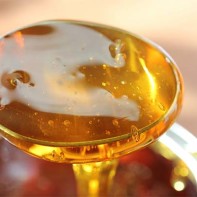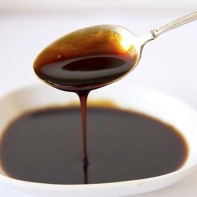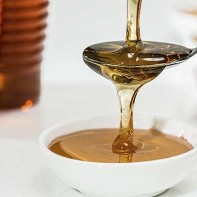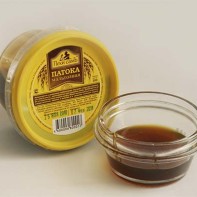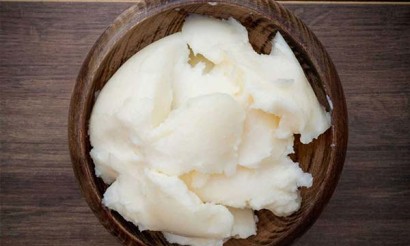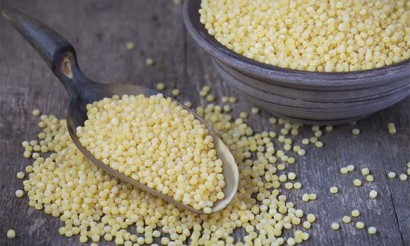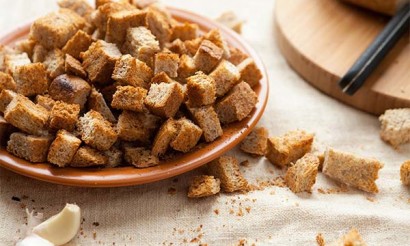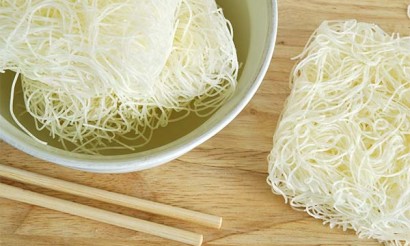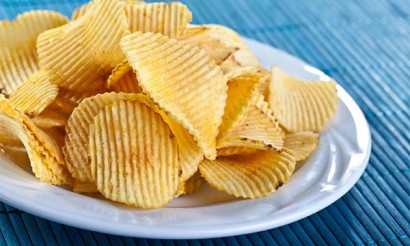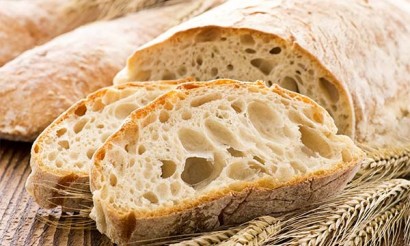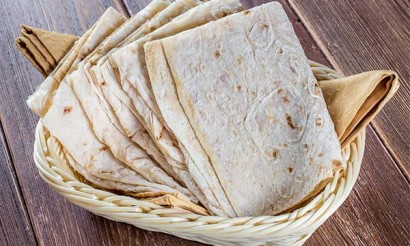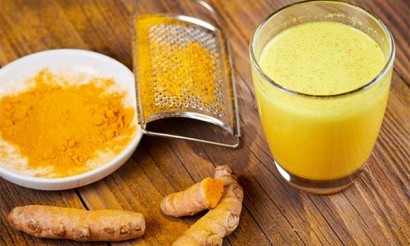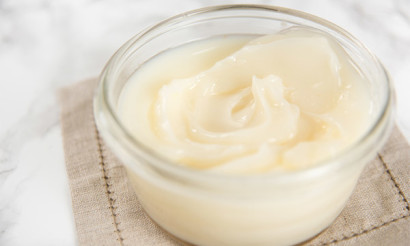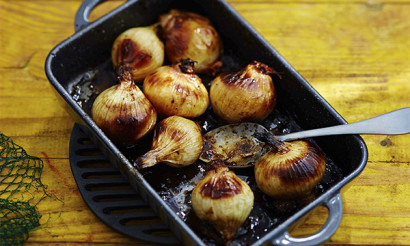Treacle: what is it, useful properties and contraindications
About the harm of sugar knows almost every inhabitant of our planet. And more and more people are thinking about what can replace it. Against this background, molasses is gaining in popularity, the more so because it contains in its composition useful vitamins and minerals.
- Treacle: what it is, how it looks and what it tastes like
- How it looks
- What it tastes like
- Types
- Production Technology
- What is Treacle Different
- From sugar
- From honey
- From molasses
- From wort
- Composition and Calories
- What is Treacle Good for?
- Caramel
- White
- Black
- Starch
- Corn molasses
- Maltose
- Beet
- Cane
- The benefits of molasses in animal husbandry
- Can molasses be used for weight loss
- Treacle and diabetes molasses: can I use it?
- Harms and contraindications
- How to make molasses at home
- Beet
- White
- How to store correctly
- What can be made from molasses
- What can be substituted for it in baking
- Interesting facts about molasses
Treacle: what it is, how it looks and what it tastes like
When sugar and starch are produced, a byproduct is formed in the form of a sweet syrup. This is what is called molasses. Its scientific name is dextrinmaltase or maltodextrin. It is obtained by breaking down starch in an enzymatic or acidic way. If the process takes place in water, both stages are present.
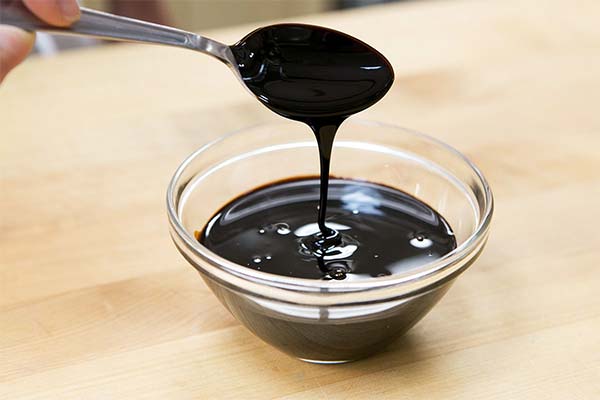
In everyday life, molasses is sometimes called other kinds of syrups that have nothing to do with starch, although this is incorrect.
What it looks like
The real product has a thick viscous consistency, somewhat reminiscent of honey. The syrup is sticky, and will reach for a spoon if you try to scoop it out of the container. The color depends directly on the type of molasses.
How it tastes
Treacle tastes sweet with a bitter aftertaste, so it is not to everyone's liking. According to GOST, it should not have any side flavors that are uncharacteristic for this product.
Types
Divide molasses into types can be divided on several grounds.
According to the raw material that was used for its production:
- Starchy. The product has a light color. It is obtained from potato, corn, wheat, rye, barley, sorghum, tapioca starch.
- Molasses. Black treacle. It is a by-product of the processing of sugar cane or sugar beet. The name comes from the Portuguese "melaco," which means honey.
According to the level of carbohydrates contained in the percentage of starch molasses:
- Caramel (36 to 44%). A colorless or light yellow syrup that is odorless. It is produced using corn or potato starch, which is split and saccharified. In the Soviet Union, this type of molasses was the only one produced in the food industry.
- Maltose (over 37%). It has a brown hue and a sweet malt flavor. It is used in cooking and for brewing beer. The manufacturing process does not involve the use of chemical acids and catalysts, so molasses remains viscous for a long time and does not crystallize. It is the cheapest substitute for sugar.
- High sugar (more than 43%). The product is highly viscous, thick and odorless. It is most often colorless, but can sometimes be yellowish in color. It has a higher degree of sweetness.
- Low sugar (26 to 35%). The main requirement in the production of this molasses is a low percentage of glucose (no more than 10%). It is used in cooking, for the production of building materials, in metallurgy for molding mixtures.
Production technology
The production of molasses in the food industry includes several stages, which require strict compliance with technological norms in order for it to be of high quality. The product must comply with the international standard GOST 33917-2016 introduced as a national standard of the Russian Federation from 01.01.2018.
- The first stage includes the preparation of starch for processing. Raw material free of foreign impurities is selected. Starch is squeezed from water and dried by spreading a thin layer on large sheets in a well-ventilated room.
- Second step. The process of hydrolysis of starch requires a temperature of 140-150 ° C. Hydrochloric acid acts as a catalyst. The dry powder is used to make starch milk. The final product depends on its concentration. For example, 40 percent makes high-sugar molasses, while for ordinary molasses only 25 percent is enough. The breakdown of starch into hydrolysis products takes place.
- The third stage. Saccharification. This process lasts only a few minutes and is carried out in special devices where heating, clistering and saccharification take place evenly. The glucoside bonds are broken off and water joins them. The end of the process is monitored with iodine samples. From the addition of hydrolysate, the iodine solution should not change color. The syrup is then cooled in the evaporator and sent for neutralization.
- Fourth step. Neutralization is carried out with baking soda and checked by the pH value of the syrup.
- Fifth stage. Filtration of molasses from foreign impurities from the starch and arisen in the process of neutralization. Do this procedure on a centrifugal separator at a temperature of 80-90°C. After this the syrup should remain transparent. Its shade will depend on the original raw material, and the saturation of color from the purity of the starch, the method of hydrolysis and the conditions of neutralization.
- Sixth step. Decolorization of the filtered syrup with adsorbents. The purpose of this procedure is the complete elimination of color, foreign odors, removal of impurities and reduction of acidity. Activated carbon and ion exchange resins are used as adsorbents.
- The seventh stage. Syrup thickening. After all stages molasses has a liquid form (concentration of 35-40%). It is boiled down to a thicker (55-57%) consistency. Vacuum evaporators are used for this purpose.
- Eighth stage. Evaporation of molasses. To obtain a high quality product, the level of dry substances in the syrup must be at least 78%. For this purpose, the purified thick syrup is again placed in a vacuum evaporator and evaporated at a temperature not exceeding 60 ° C for at least an hour.
- The ninth stage. Cooling. Since molasses of thick consistency naturally cools down slowly, taking a long time to cool down, which leads to discoloration, it tends to cool down quickly to 45° Celsius. For this purpose a heat exchanger is used, in the center of which there is a circulating tube and an agitator. The molasses, passing through the tubes of the coil, is cooled and falls into a special collector.
The product is then packaged and sold. Treacle produced using this technique has a shelf life of 12 months.
How molasses differs
Despite the fact that molasses replaces some products in recipes, it has its own differences.
From sugar.
Treacle is a byproduct of making sugar and starch. From sugar beets and cane, molasses is produced. The taste of the syrup is noticeably sweeter compared to raffinate. At the same time, it is more useful because it contains various minerals and vitamins.
The use of syrup allows jams and molasses not to sugary, enhances the fruit or berry flavor of the product. It does not allow quickly stale confectionery products.
Unlike honey.
The most important difference is that honey is produced by bees. It is a natural product with a strong floral odor. To get molasses, you have to do a lot of work.
Although molasses resembles young honey in consistency, you can still tell the difference. The bee product is more viscous. If you scoop it up with a spoon, it will drip in large drops, while the thick syrup will pull in a "thread". The molasses tastes like sugar, but after drinking honey there is no such feeling. Outwardly, the second should be more transparent than the product of starch hydrolysis. Another way to tell one from the other is to try rubbing the product into the back of your hand. A drop of honey will quickly be completely absorbed, while molasses will leave a sticky residue.
From molasses.
Molasses, unlike starch molasses, is a by-product in the production of granulated sugar. It is considered a feed additive. The syrup has a dark brown color and a peculiar odor. Waste from the processing of sugar beet is inedible to humans, but cane molasses is a food additive (in America and Canada it is used in cooking).
The main difference from starch molasses is the color and smell. At the same time black molasses is considered more useful.
From kvass wort.
Kvass wort, like molasses, is a viscous thick liquid. But unlike the latter, it is dark brown in color and tastes like sour-sweet. It is made from partially sprouted and dried cereal grains.
Composition and calories
Treacle serves as an excellent substitute for sugar because, unlike it, it contains beneficial substances for human health.
Vitamins:
- thiamine (B1);
- riboflavin (B2);
- choline (B4);
- pantothenic acid (B5);
- pyridoxine (B6);
- nicotinic acid (B3).
Macronutrients:
- potassium;
- calcium;
- magnesium;
- sodium;
- phosphorus.
Micronutrients:
- iron;
- manganese;
- copper;
- selenium;
- zinc.
Digestible carbohydrates:
- Mono- and disaccharides;
- glucose;
- sucrose;
- fructose.
Saturated fatty acids, monounsaturated, polyunsaturated acids.
The energy value of the product - 290 kcal per 100 grams, which consist mainly of carbohydrates.
How is molasses useful?
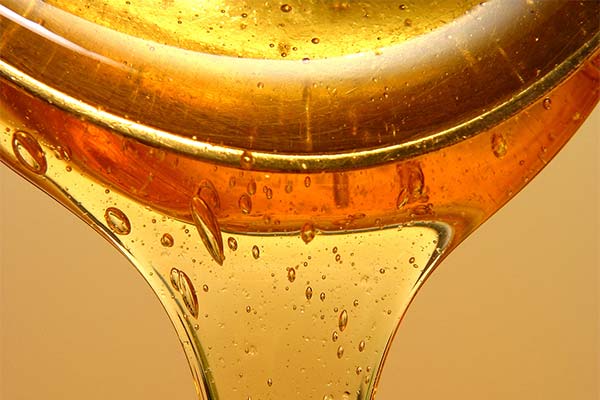
Caramel
This type of molasses is the most familiar in the former Soviet Union. Housewives use it most often for baking and in the processing of fruits and berries.
Caramel syrup contains fructose, maltose, glucose, dextrins, proteins, enzymes, fats, B vitamins, and mineral elements such as phosphorus, iron, sodium, potassium, calcium, magnesium.
An unusual way to use this product are masks for hair, which were made by women themselves in the last century. To do this, molasses was diluted with water in equal parts and applied to the head. It was believed that it promotes hair growth and slows the appearance of gray. The same mask for the face improves skin tone and slows down aging.
White
White molasses is most commonly used to make syrups. It is considered one of the best sweeteners, although the raw material for it is refined sugar. Although the energy value of the product becomes lower, it is still high.
A big plus of this molasses is that it is quite easy to prepare at home. Although the benefits of this product will be less than with other types of this syrup.
Black
Black molasses is considered the most useful of all.
- It contains copper and essential micronutrients that help repair damaged hair, improve the structure of the nails when they are brittle, and have a beneficial effect on the skin.
- The moderate glycemic index allows it to be consumed in small doses by people suffering from type 2 diabetes. The low calorie content of the product makes it possible to add black treacle to drinks when dieting for weight loss.
- With constipation, this product is advised as a natural laxative. When used regularly, it will also help to normalize bowel activity to avoid similar problems in the future.
- Two teaspoons of syrup per day are recommended for pregnant women and people with anemia. The high iron content of blackstrap molasses keeps hemoglobin levels normal.
- The ideal ratio of calcium to magnesium promotes its absorption by the human body. Which serves as a prophylactic against osteoporosis and strengthens the bone skeleton.
- Manganese helps to produce energy from proteins and carbohydrates from food. Potassium has a beneficial effect on the human nervous system, vitamin B6 is a storehouse of enzymes, helps normalize metabolism.
- Black treacle is better used as an additive in drinks. You can dilute 2 teaspoons of syrup with plain hot water. Drank in the morning on an empty stomach, it will give a charge of vivacity for the whole day.
Starchy
This type of molasses is mainly used in confectionery production as a sweetener and anti-crystallizer.
According to scientists' observations, glucose syrup is the most optimal as a sweetener in the human diet. It reduces the caloric content of ready meals, gives them additional useful properties, increases the shelf life of confectionery products without harming health.
Thanks to the use of bioconversion of starch, molasses with improved characteristics have appeared on the market.
Corn molasses
Corn syrup is most commonly recommended in sports and dietary nutrition. Quickly digestible carbohydrates are indispensable for high physical and mental exertion.
In addition, the presence of vitamins, minerals and amino acids in it allow:
- Increase immunity and maintain the body's resistance to seasonal viral diseases.
- Accelerate the absorption of substances and adjust their metabolism in the body.
- Improve the function of the gastrointestinal tract.
- Syrup in the composition of biscuits, bread and other pastries increases the puffiness, making the products lighter, airy.
Maltose
Maltose refers to simple carbohydrates that help you recover quickly from significant energy expenditures. It is easily digested by the body. The process begins even before molasses enters the stomach, thanks to the presence of the enzyme amylase in saliva. This property makes maltose more useful than fructose and sucrose.
Many dishes recommended in diets include this syrup: cookies, breads, puff pastries, granola and other products.
Maltose syrup contains B vitamins, amino acids, the trace elements potassium, zinc, phosphorus, magnesium and iron.
Beet molasses
Molasses made from sugar beets differs significantly from cane molasses. Treacle is only the syrup left over after final crystallization. Intermediate syrups are used as a food additive for livestock, as they have an unpleasant taste and odor for humans.
Cooked on its own, it is used in cooking. It helps:
- For diseases of the gastrointestinal tract.
- To stimulate the cardiovascular system.
- Helps the brain, strengthens the nervous system.
Cane molasses
Treacle is obtained as a by-product of the production of cane sugar. The hue depends on the raw material. The color varies from light to dark brown. The product was popular in the United States until the mid-20th century. It was widely used not only in cooking, but also in brewing.
Molasses A is the first syrup and is distinguished by its high sugar content. Melass B - the second molasses already has a bitter taste. The third boil makes the molasses dark and viscous with a strong odor and low sugar content. C molasses is called Blackstrap, and has the highest concentration of vitamins and minerals.
Despite its bitter taste, it is sold as a dietary supplement. It is also used as a fertilizer and used for feed in livestock production.
The usefulness of molasses in animal husbandry
Fodder syrup is widely used in animal husbandry. On large farms it is added to cattle, pigs, horses and sheep. Goes it and on bait fish. On private farms it is given to goats.
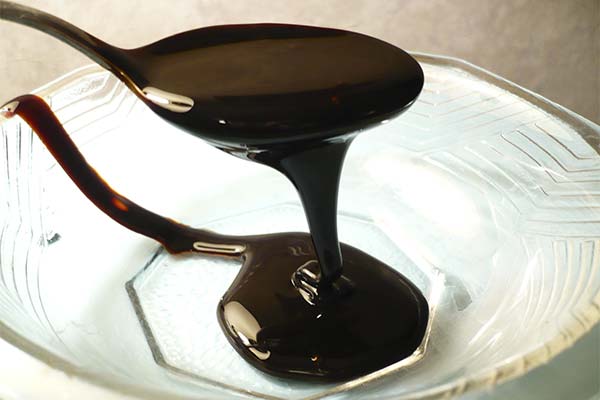
It is a high-energy product, which replaces the concentrated feed. Therefore, the rate is strictly calculated and added to the straw and hay. Increasing the daily dose can lead to acidosis.
Sugar deficiency in the diet of cows leads to loss of milk fatness, impaired reproduction functions, and reduced milk yields. Treacle makes up for this deficiency. After a week of using this additive, milk yields increase on average by 10% and the fat content of milk increases by 0.3-0.4%. The weight of newborn calves increases.
Observations of the animals showed that the use of molasses:
- Increases the digestibility of roughage.
- It is a product that attracts animals with its taste qualities and increases their appetite.
- Helps to reduce stress at the moment of transition to stabling.
- Reduces the cost of the final product.
- It is an additional source of energy.
- Improves the palatability of cow and goat milk.
Introduce molasses to the ration gradually, increasing the dose little by little, day by day, so that the rumen microorganisms can adapt to the new component. Dairy calves are not given molasses.
For fattening pigs molasses containing large amounts of sugar is used. It should be taken into account that the low proportion of non-protein nitrogen will result in only 50% of protein being assimilated by the animal. For piglets, this dietary supplement serves as a good substitute for lactose, which saves about 20 percent on feed costs.
Both chickens and adult chickens enjoy eating molasses. But it rather serves as a kind of dessert, so it should be given very carefully, preparing a sweet mash on its solution.
Even the most fastidious horses will eat molasses. It is excellent as an additive to the main feed and as a "muesli" to encourage the animal.
Cane molasses, beet molasses, and grain molasses are used as feed.
In fisheries molasses is used as a bait in places where fishing takes place. Its task is to activate the fish's appetite. That is, molasses is considered to be a powerful natural attractant.
Is it possible to lose weight with molasses?
Not everyone is able to give up sweets once and for all, no matter how much he dreams of losing weight. To make this process more gentle and stress-free, you can replace the usual sweets with molasses. It has no fat and is less caloric than the usual sugar. But over time, it is better to give up this product as well. At most, use it in very limited quantities in the first half of the day, while increasing physical activity. Because of the low sucrose content, the body will quickly convert calories into energy.
The best option would be to use black molasses. Despite its specific smell and taste, the body will get a sweet treat. But it will not be possible to eat a lot of this product.
Treacle and diabetes molasses: can you use it?
With type 2 diabetes molasses acts as a sugar substitute. This is especially true for molasses. It has a low glycemic index, it is effectively absorbed by the body and does not lead to a sharp increase in blood sugar. But the use of the product should be limited to the norm, based on the calculation of 0.5-1 grams of molasses per 1 kilogram of weight of the patient per day.
Before eating other types of syrup, you should study their glycemic index. Some have a high one.
Harm and contraindications
There are not many contraindications to the use of molasses in food. Nevertheless, they should be considered before introducing this food additive into the diet or using it to make baked goods or jams.
- It is an allergenic product. Therefore, if the body does not accept all products, it is better to try it in a small dose for the first time. If you have a runny nose, stuffy nose, rash, you need to take an antihistamine and give up molasses.
- Some people have little amylase enzyme in the body, for them taking maltodextrin is contraindicated.
- Some types of syrups have a high glycemic index, so it is better to choose black molasses for diabetes.
- The product has a high caloric value, so, leading a sedentary lifestyle, there is a risk of the transition of carbohydrates into fat. Bodybuilders sitting on a special diet, it is better to exclude molasses from the diet.
- Continuous consumption of molasses in food can increase hunger.
- If the intestines do not work properly, the syrup can cause abdominal discomfort, bloating, flatulence. If this happens after the first ingestion of the product, you should reduce the dose and accustom your body to an unfamiliar product gradually.
- Dissolved in hot water molasses can have a negative impact on tooth enamel, destroying it and staining it a dark color. Therefore, it is recommended to drink such a solution only through a cocktail straw.
How to make molasses at home
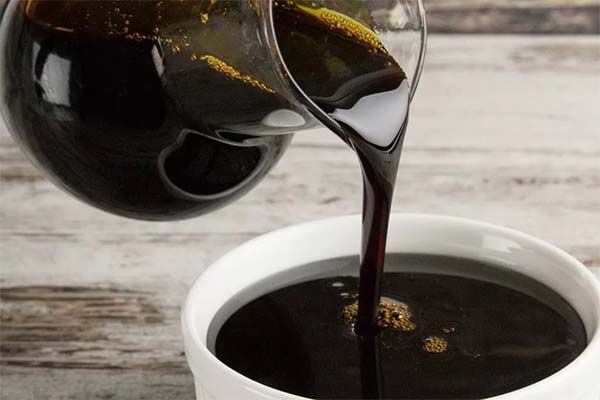
Beet molasses
In order to get beet molasses, you need to prepare 1 medium beet, 0.5 cup of water and 6 tablespoons of granulated sugar with a slide.
Recipe: Using a juicer, squeeze the juice from the beets. If you do not have it, you can grate the vegetable on a grater, add water to it and thoroughly knead with your hands so that the water turns brown.
All squeeze through gauze folded several times. In the cake again add a little water, and the process is repeated again.
The resulting juice is diluted with sugar and put on the stove. After boiling, turn down the heat and simmer until it thickens. Usually it takes 40-50 minutes to boil. It should decrease in volume by about 3 times. The aroma of caramel appears.
The finished molasses should look like a dark brown syrup and taste like burnt sugar.
White
It's easiest to make white molasses from refined sugar at home. As a rule, all the products are available in every kitchen.
You will need 700 grams of sugar, 300 ml of water, 3 grams of baking soda and 4 grams of citric acid.
The recipe: Put water on the fire in a saucepan and heat to a boil. After that, pour the granulated sugar, stirring constantly. When the syrup boils, add citric acid, stir and leave the mixture to simmer on low heat for 40-45 minutes. After that, without opening the lid, the composition cools.
Diluted in a small amount of baking soda poured into a cooled mass and stir thoroughly. The contents of the pot should begin to foam. If the foam does not settle after 10-15 minutes, you need to remove it with a spoon. The molasses is ready.
How to Store Properly
Purchased molasses produced industrially is better stored in the same container in which it was sold. The optimum temperature is no higher than 12 degrees Celsius. In a warmer room the product will begin to lose its viscosity. Shelf life is 1 year from date of manufacture. Do not mix molasses of different types or from different manufacturers in the same jar.
Home-made molasses should be poured into a sterilized glass jar and stored in the refrigerator or cellar. The shelf life of such a product is 12 months. The product diluted with water should be used in a day or two. Otherwise, the fermentation process can begin.
What can be made from molasses
As a sugar substitute in drinks, light molasses is most often used. Dark goes for making desserts, pastries, and jams.
Honeydew Cake for those who don't eat honey
Ingredients: For the dough you need 100 g of butter, 200 g of sugar, 3 eggs, 3 tbsp of molasses, 1.5 tsp of baking powder, 350 g of flour. For the cream you need: 900 ml of heavy sour cream, 4 tbsp. sugar, lemon juice from half a lemon, 4 tbsp. molasses.
Recipe: Butter is melted in a steam bath, sugar is added and everything is stirred. One by one, the eggs are beaten in the same bowl, without stopping to stir. Then molasses is poured in.
Half of the flour is mixed with the baking powder, and added to the rest of the mixture. After this, the bowl is removed from the steam bath and the remaining flour is slowly poured in. The finished dough is divided into 8 pieces, rolled into tortillas, and baked for 2-3 minutes. Trim the edges and cool.
For the cream, whisk sour cream with sugar and add lemon juice. Without stopping to stir, pour in molasses. Spread the ready cream on the layers and sides of the cake. Sprinkle the crumbs left over from cutting the edges of the cakes on top.
What you can substitute when baking
You don't always have molasses on hand, but you want to try a new recipe. Or you need it for a long-time tried-and-true dish when the ingredients are already mixed.
3/4 cup of sugar replaces 1 cup of molasses. Invert syrup, honey, maple syrup or glucose syrup replaces 1:1 molasses.
Interesting facts about molasses
There is a terrible incident in Boston associated with the production of molasses. There, in 1919, a large container of hot syrup was blown up. A wave of red-hot liquid about 4 meters high rushed into the streets and in a short time, 8700 cubic meters of molasses spilled over the streets at a speed of about 60 kilometers per hour. People had no time to escape and drowned in the sweet syrup. Many got burned. After the molasses cooled down, an entire area of the city became uninhabitable. U.S. Army naval units were brought into Boston to restore order.
More than a hundred years have passed, but even today in the North East area the ground, soaked in the sweet product, smells like caramel.
The company has paid a fairly large sum of money to the victims.
«Important: All information on this site is provided for informational purposes only for informational purposes only. Before applying any recommendations, consult a health care professional. consult a health care professional before applying any recommendations. Neither the editors nor the authors shall be liable for any possible harm caused by materials."

